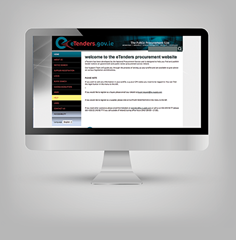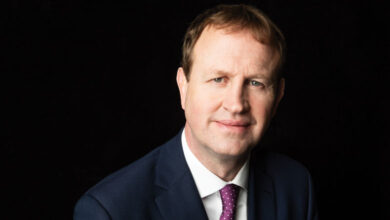Smarter procurement
 Vincent Campbell, Director of the National Procurement Service, talks to Owen McQuade about the review of the government procurement and the significant changes to public procurement that are under way.
Vincent Campbell, Director of the National Procurement Service, talks to Owen McQuade about the review of the government procurement and the significant changes to public procurement that are under way.
In 2012, the Department of Public Expenditure and Reform (DPER) commissioned Accenture to carry out a high level review of the central procurement function in government. The six-week capacity and capability review engaged with all key stakeholders in the public procurement process and accessed all available data, from estimates to data directly from the tendering processes. “Look at the numbers and really determine the size of the prize. That was the crucial thing,” says Campbell.
The report concluded that of the €9 billion spent by the public sector on goods and services, over two thirds was addressable by procurement. The total spend was then split into a number of categories, and a high range and a lower range of potential savings were identified for each category. Campbell says that the high level is “when you have absolute focus over the various categories, with a co-ordinated approach across the public sector and using demand management.”
He adds: “It also means looking at the specifications which vary from sector to sector and also engaging with industry and SMEs to get their input into what their offerings are before you go back out to the market.”
Other recommendations in the Accenture report include the establishment of a National Procurement Office (NPO) and the appointment of a Chief Procurement Officer, who is fully accountable for governance, strategy, policy, operations, demand management, implementation and compliance. It was recommended that the NPO should have strong capabilities in analytics, category management and information management across public sector procurement.
Paul Quinn was appointed Chief Procurement Officer at the end of January and work is under way in establishing the NPO as an agency within DPER. The new agency will look to put in place a model to drive the initial phase of the savings plan with the establishment of the initial categories for targeting savings and initiating other methods, such as demand management and specifications management.
It will also ensure that other government policies, such as green procurement and SME access, are incorporated into any reform of the procurement process. The National Procurement Service, the Centre for Management and Organisational Development (CMOD) and the National Procurement Policy Unit functions will make the transition into the new National Procurement Office.
eTenders has been the online procurement system since the early 2000s. The system has been re-tendered itself and a replacement system has been installed. “eTenders was there for about eight to nine years but we had to re-tender to get the next generation offering, with additional functionality,” he remarks. “What we were looking for was an off-the-shelf system that is already operating elsewhere and, having done our research, we were satisfied the market could provide that: something that would give a lot of wins to buyers and suppliers in terms of efficiency by reducing the overall cost of doing business with the public sector.”
With the offerings becoming larger, how will SMEs get access to the public sector market? He replies: “There are a number of ways. Firstly, before we go into the market, we would talk to the SME community; SMEs involved in the different categories. We liaise with them to know exactly what their offerings are. Whilst the offerings will be larger, we are looking at the option of dividing them into lots. We are also looking at the option of splitting an offering by geographic region or by sector but it really depends on the category. It wouldn’t be one approach to fit all.”
Smarter procurement
When asked to identify the most important area for procurement reform, Campbell replies: “There are two important aspects of procurement reform. The first [is] by up-skilling people. You can take a lot of unskilled people out of the system and reduce the cost of administration.
“Secondly, by putting larger offerings to the market. For example, if you undertake a decentralised process it will cost €6,000 per transaction. For a centralised or framework process, it will cost €25,000 to €30,000 depending on the category but you could save €1.5 million to €2 million before you even add in the market aggregation benefits.”
Campbell continues: “The Minister has also said to the market to give just one price to the public sector (the best price always for the public sector) and not to vary the price depending on which part of the sector is going to the market and how professional they are. He has met the top 50 suppliers in the country and said to them that in future when they are tendering, they should give a single price to the public sector.”
He concludes by emphasising the importance of co-ordination. “Also, having the right hand knowing what the left hand is doing is critical,” he states.
“It is important to have a consolidated view of what each the sectors are doing. It is about market information and to be able to do things in a more efficient and co-ordinated manner. It’s basically working smarter.”






